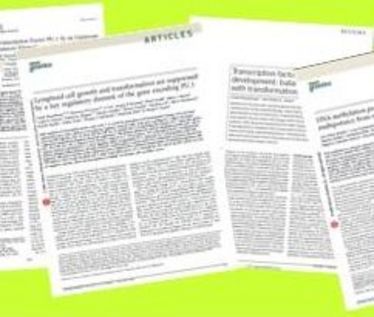The IMTB congratulates Daniel Schützmann from the Laboratory of Molecular Stem Cell Biology for publication of his paper in BLOOD.
Daniels work on the three-dimensional chromosomal architecture of the gene encoding the important myeloid transcription factor PU.1 just appeared in the BLOOD Journal (https://bloodjournal.org/content/early/recent). Epigenetic control of gene expression occurs within discrete spatial chromosomal units called topologically associating domains (TADs), but the exact spatial requirements of most genes are unknown. Daniel and colleagues applied high-resolution chromosomal conformation capture-sequencing (4C-seq) to map the spatial organization of the human PU.1 gene locus in healthy monocytes and acute myeloid leukemia (AML) cells. They identified a small dynamic chromosomal unit as the genomic region in which spatial interactions between PU.1 gene regulatory elements occur during myeloid differentiation and are interrupted in AML. Within this region, proper initiation of the spatial chromosomal interactions requires PU.1 auto-regulation and recruitment of the chromatin-adaptor protein LDB1 (LIM domain-binding protein 1). However, once these spatial interactions have occurred, LDB1 stabilizes them independently of PU.1 auto-regulation. Thus, the data support that PU.1 auto-regulates its expression in a ‘hit-and-run’ manner by initiating stable chromosomal loops that result in a transcriptionally active chromatin architecture.


